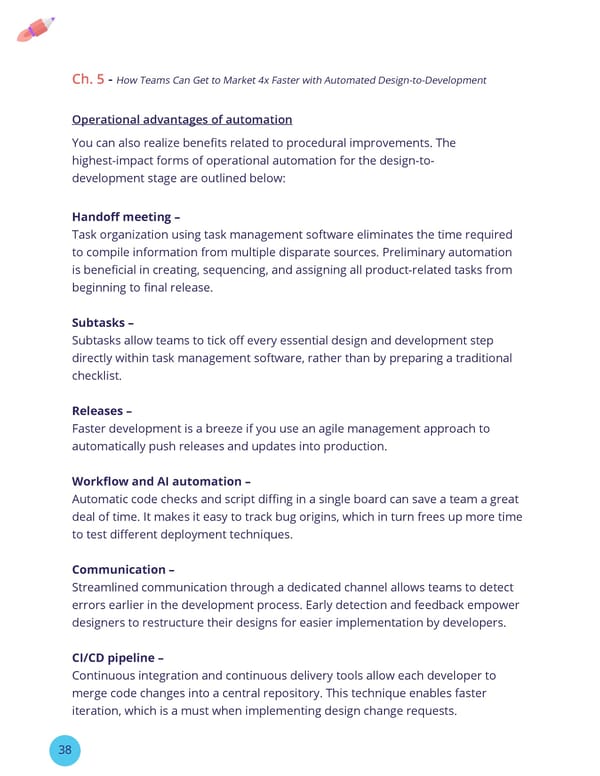Ch. 5 - How Teams Can Get to Market 4x Faster with Automated Design-to-Development Operational advantages of automation You can also realize benefits related to procedural improvements. The highest-impact forms of operational automation for the design-to- development stage are outlined below: Handoff meeting – Task organization using task management software eliminates the time required to compile information from multiple disparate sources. Preliminary automation is beneficial in creating, sequencing, and assigning all product-related tasks from beginning to final release. Subtasks – Subtasks allow teams to tick off every essential design and development step directly within task management software, rather than by preparing a traditional checklist. Releases – Faster development is a breeze if you use an agile management approach to automatically push releases and updates into production. Workflow and AI automation – Automatic code checks and script diffing in a single board can save a team a great deal of time. It makes it easy to track bug origins, which in turn frees up more time to test different deployment techniques. Communication – Streamlined communication through a dedicated channel allows teams to detect errors earlier in the development process. Early detection and feedback empower designers to restructure their designs for easier implementation by developers. CI/CD pipeline – Continuous integration and continuous delivery tools allow each developer to merge code changes into a central repository. This technique enables faster iteration, which is a must when implementing design change requests. 38
 The Non-Technical Founder's Guide to Building an App | CrowdBotics Page 37 Page 39
The Non-Technical Founder's Guide to Building an App | CrowdBotics Page 37 Page 39